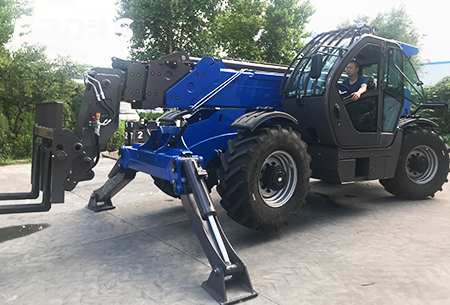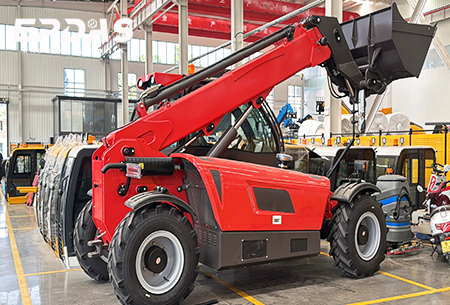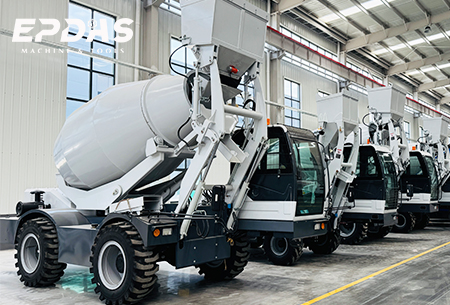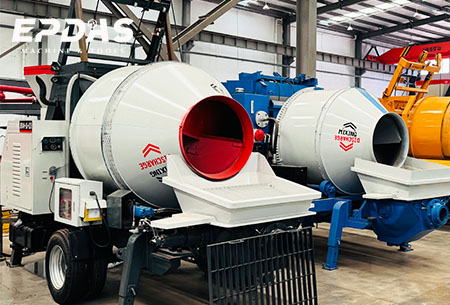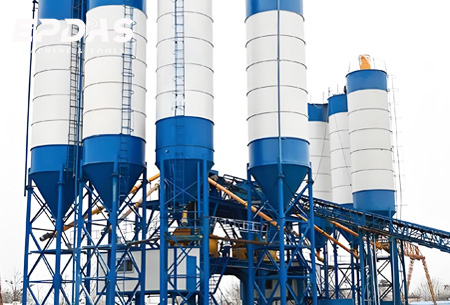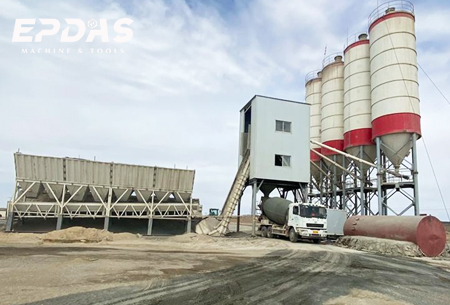Kazakhstan regards infrastructure development as the core strategy for its national economic growth. By systematically upgrading transportation, energy and urban facilities, it has built a modern network that supports economic transformation. The country, under the framework of the “Path of Light” policy, focuses on promoting cross-border connectivity projects, laying the foundation for regional cooperation and global layout.
Kazakhstan takes the construction of concrete mixing plants as a key part of infrastructure upgrading, and through large-scale layout and intelligent transformation, provides efficient support for transportation, energy and urban development projects, and promotes the synergistic development of the country’s industrialization process and regional economy. As an important practice area of the “Bright Road” policy, the modernization of the concrete production system is becoming a strategic pivot for connecting upstream and downstream industries and guaranteeing the quality of major projects.
Kazakhstan has identified transportation, energy and urban development as the strategic pillars of its national economic growth. As an important hub node of the “Belt and Road Initiative”, Kazakhstan has achieved remarkable results in modernizing its infrastructure, providing key support for regional economic integration through systematic upgrading.
Land transportation: Focusing on improving transnational highway trunk lines and upgrading railroads along the China-Europe liner train.
Logistics system: Accelerating the construction of ports on the Caspian Sea coast and inland anhydrous ports.
Border hub: Upgrading the China-Harbin-Khorgos International Border Cooperation Center with intelligence.
Strategic corridors: 70% of the work on the Western Transportation Corridor project has been completed.
As an important energy producer, Kazakhstan has accelerated the progress of energy infrastructure construction. A number of large-scale oil and gas field development projects are advancing steadily, the construction of new energy power plants such as wind and solar power stations is accelerating, and the modernization of the national power grid is proceeding smoothly.
remarkable results have been achieved in the construction of infrastructure in the major cities of the capital. Urban rail transit, smart cities and other projects have been implemented one after another, and the carrying capacity of the cities and the quality of life of the residents have been significantly improved.
Under the framework of China-Kazakhstan production capacity cooperation, infrastructure projects between the two countries are progressing smoothly, covering a number of major projects such as highways, railroads and power stations. The advantages of Chinese enterprises in terms of technology, capital and experience have provided important support for Kazakhstan’s infrastructure construction.

Located in the heart of Central Asia, Kazakhstan’s “Bright Road” national development strategy is centered on large-scale infrastructure development and is aimed at securing social employment and stability through diversified economic transformation. As the largest landlocked country in Central Asia, Kazakhstan, by virtue of its geographical advantage of straddling the Asian and European continents, has connected the “Bright Road” with China’s “One Belt, One Road” initiative.
In the field of building construction, national projects have strict requirements on the quality and efficiency of building materials, and the demand for concrete has increased significantly, of which mobile concrete batching plants have become the just-needed equipment for highway, bridge and energy infrastructure projects due to their flexible deployment and efficient production. This policy covers major projects such as highways, railroads and ports, which promotes the strong demand for efficient construction equipment.
In Kazakhstan, infrastructure construction faces multiple challenges, including extreme temperature differences and complex terrain. In transportation construction, the construction team needs to pour concrete in the winter cold, and the ordinary mixing equipment often causes the concrete to set abnormally due to the low temperature; while in the wind power project site along the Caspian Sea coast, the salty, windy and sandy environment puts severe requirements on the corrosion resistance of the mixing equipment.
These projects not only require high strength concrete, but also a continuous supply. Traditional stationary mixing plants often find it difficult to meet these dynamic construction demands due to the limitation of transportation radius.
China’s advanced concrete equipment manufacturing technology is helping Kazakhstan upgrade its infrastructure. The introduction of intelligent mixing plants, environmentally friendly production lines and other equipment not only improves the level of engineering construction in Kazakhstan, but also creates more local employment and technical training opportunities.
Although the traditional large-scale stationary mixing plant has a large production capacity, facing the situation of Kazakhstan’s vast territory, sparse population, frequent site relocation and complicated construction conditions, YHZM series mobile mixing plant is a more suitable choice for the local area.
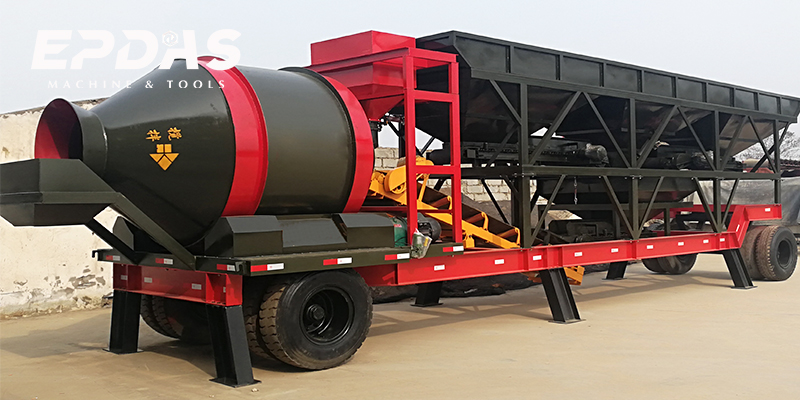
In the vast geography of Kazakhstan, there are many limitations to the application of traditional large-scale stationary batching plants. Kazakhstan’s large size and dispersed population means that construction projects are often located in far-flung areas.
In the case of wind power development, for example, many wind farm clusters are located in remote areas, far from existing concrete production bases; similarly, oil extraction operations and mining development projects are located in sparsely populated border areas. Such long-distance transportation not only significantly increases logistics costs, but also, due to the long distances and complex road conditions, leads to the deterioration of concrete quality during transportation, which seriously affects the overall performance of the project structure.
Flexibility: Adopting modularized design and vehicle-mobile chassis integration technology, a single unit can be disassembled, transferred and reassembled in a short period of time, which drastically shortens the relocation time compared to several days for traditional fixed mixing plants. This mobility capability can facilitate decentralized projects such as rural roads and border crossings.
Environmental adaptability: The mobile mini mixing plant is equipped with a low-temperature resistant hydraulic system and mixing host, which can still be started normally under extreme cold climate; under high-temperature environment, it is equipped with double-circulation water-cooling system and heat-insulating layer design, which can guarantee the equipment to continue to work at 40°C. The portable mini mixing plant is also equipped with an all-terrain mixing system for complex terrains. For complex terrain, it is equipped with all-terrain tires and adaptive suspension system, which can still operate stably in the mountainous roads with super gradient.
Infrastructure construction in Kazakhstan is obviously characterized by “small, scattered and short”, with small and medium-sized projects accounting for more than 75% of the total. Taking the construction of rural roads as an example, the average daily demand for concrete for a single project of new or renovated roads in the country is 20-100 cubic meters per year, and the construction period is generally 3-6 months.
Compared with the traditional fixed mixing plant, the daily production capacity of mobile mixing plant can reduce the idle rate of the equipment by more than 40%, avoiding the depreciation of the equipment, energy consumption and other waste of resources due to the overcapacity, and realizing the double optimization of the project’s economic and environmental benefits.
As a new generation of concrete production equipment, YHZM type portable concrete batching plant adopts modularized integrated design concept, highly integrating the core production function system into the movable trailer unit.
The equipment is equipped with a high-precision dynamic batching system, which can accurately proportion the raw materials such as sand, cement, water and admixtures within ±1%; with the intelligent weighing system composed of multi-range weighing sensors, it realizes the digital measurement of the whole process.
The mixing machine adopts double screw drum structure, with frequency conversion speed control technology, the rotational speed per minute is uniform, to ensure the uniformity of concrete mixing. The equipment is equipped with built-in storage silo and hydraulic lifting and unloading device, and the unloading height can be up to 3 meters, which is suitable for all kinds of transportation vehicles.
The automatic control system composed of PLC + touch screen supports preset ratio storage, real-time monitoring of production data and self-diagnosis of faults, which can realize 24-hour unattended production.
The whole machine is connected to the tractor through the standard trailer interface, and the wheelbase is in line with the highway transportation specification, which can complete the transfer and deployment within 2 hours, providing an efficient and flexible one-stop solution for the decentralized concrete production scenarios, such as bridge construction, tunneling, and rural infrastructure.
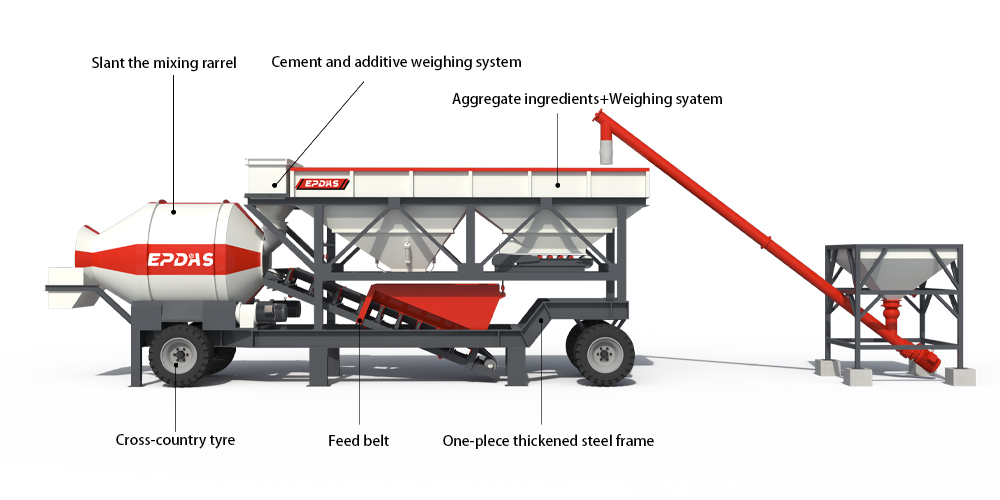
In the newly developing construction industry, portable concrete batch plants enable contractors to produce high-quality concrete directly at the project site or in a neighboring area, effectively solving the challenges associated with long-distance transportation.
The biggest advantage of mobile batching plants is their outstanding adaptability. From an economic point of view, mobile mixing plants offer significant cost optimization. By eliminating the long-distance transportation link, it not only significantly reduces the logistics cost, but also avoids the problem of performance degradation of concrete during transportation.
Technical innovation is the core driving force for mobile mixing plant’s rapid development. The mobile concrete mixing plant integrates advanced technologies such as intelligent control system, automatic weighing device and modularized quick-fit interface, which achieves production accuracy and stability comparable to that of fixed plants while maintaining mobility.
In terms of engineering practice, portable mixing plants have been successfully applied in various scenarios. From the segmented construction of infrastructure, to the construction of energy projects in remote areas, to urban renewal and renovation projects, this flexible concrete production solution has shown unique advantages.
Concrete mixing machine chassis: It adopts cantilever design, including trailer towing pins and parking legs; the chassis is equipped with mixing machine, cement and water admixture weighing scales, and peripheral maintenance walkway and guardrail.

Control room: Located at the bottom of the chassis of the main engine, equipped with the same fully automatic control system as that of the stationary mixing plant; it serves as the front support point of the whole plant when working, and it can be folded up and stowed away when transferring, without dismantling the control line.

Aggregate batching and weighing system: Located at the rear end of the whole plant, the upper part is aggregate (sand, stone) storage hopper (can be divided into 2-4 compartments with height-enhancing plate to lift up the storage capacity), which can realize the cumulative weighing of many kinds of materials through the pneumatic sequential opening of the door; the bottom part is equipped with travelling rear axle and working outriggers.

Belt conveyor frame: The truss structure connects the chassis of main machine with the aggregate batching frame, carrying the conveyor belt, which forms the main body of the station together with the main machine and the batching frame.
Peripheral parts: Cement silo and screw conveyor, no matter in working or transportation state, they are all integral structure, which can be directly transferred without disassembling.

No concrete foundation required: YHZM portable concrete mixing plant adopts modular design and high strength steel chassis, which can be put into use by pre-buried anchor bolts or counterweights, without the need to pour heavy concrete foundation in 2-3 weeks like traditional mixing plants, especially suitable for temporary projects with tight schedule.
Fast installation: With prefabricated modules and integrated piping design, YHZM mixing plant can be “ready to use”. It greatly shortens the project preparation time and helps the project to enter the substantial construction stage quickly.
Cost Advantage: YHZM series mobile mixing plant adopts imported hydraulic system and PLC intelligent control system, and reduces 20% of procurement cost through localized production, which significantly reduces the user’s full life-cycle cost of using the plant while guaranteeing the quality.
Drum type mixing machine: Equipped with patented double screw mixing blades and frequency conversion speed control system, YHZM’s type concrete batching plant can realize 360° mixing without dead angle. By dynamically adjusting the mixing speed and time, it ensures that the mixing uniformity of aggregate, cement and additives is ≤1.2%.
In the Western Transportation Corridor project in Kazakhstan, the site location can be flexibly adjusted according to the construction progress, avoiding long-distance transportation of concrete, and quickly adapting to diverse project environments.
integrates automated control of the entire concrete production process, ensuring stable concrete quality through accurate weighing and reducing material waste. The control system supports remote monitoring and operation, which reduces manual intervention and is especially suitable for areas with a shortage of technicians.
Significantly reduces project preparation and closeout time, which translates directly into schedule assurance for government or commercial projects with tight deadlines.
adopts an enclosed design, effectively reducing dust and noise emissions; optional wastewater recycling system to realize resource recycling, complying with Kazakhstan’s increasingly stringent environmental protection regulations, and contributing to the sustainable development goals of the “Bright Road” program.
In view of the temperate continental climate of Kazakhstan, YHZM mixing plant has been optimized:
Low Temperature Starting System: The mixing machine and hydraulic system are equipped with heating device, which ensures the smooth starting in low temperature in winter, avoiding stoppage of work due to the solidification of oil and freezing of pipeline.
Sealing and heat dissipation design: the electrical control cabinet adopts dustproof and waterproof standard to resist sand and dust and summer rainstorm; the mixing barrel of the main engine is lined with wear-resistant steel plate to reduce the abrasion caused by the adhesion of materials under high temperature.
Protective facilities: the key components are installed with rain and sun shelters to prolong the service life of the equipment and ensure stable operation throughout the year.
Project sites constructed in Kazakhstan are often hundreds or even thousands of kilometers away from each other. YHZM’s trailer chassis is designed to allow the transfer of only 1-2 trailers, avoiding the waste of resources that would be associated with the construction of stationary mixing plants in remote areas.
Kazakhstan has a variety of terrains, including grasslands, deserts and mountains, and many sites lack hardened surfaces and are even exposed to mud and gravel. YHZM responds to the challenges with two key designs:
Hydraulic outrigger system: no need to pour a concrete foundation, and it can be quickly leveled and secured by the adjustable outriggers, which allows for stable operation on slopes of ≤5°.
Anti-skid chassis and reinforced structure: The key parts of the machine body are made of high-strength steel, which can withstand the impact of wind, sand and debris, and excel in field projects such as mine road construction and oil field camp support.
Apart from large ports and high-speed rail projects, there are more small and medium-sized projects such as rural roads, small-scale water conservancy, border posts, etc. in Kazakhstan’s infrastructure construction. YHZM’s capacity design (25-100 m3/hour) perfectly matches such needs, and one set of YHZM can meet the concrete supply of 3-5 villages, and it can be transferred to new sites quickly after the completion of the project. One YHZM concrete batching plant mobile can supply concrete to 3-5 villages, and can be quickly transferred to a new site after the project is completed, significantly increasing plant utilization.

Reduce pre-construction costs: no foundation construction is required, eliminating the time and cost of concrete pouring and curing, especially suitable for geologically complex or bad weather areas (e.g. winter tundra period).
Reduce transportation cost: produce concrete on site, avoiding the cost increase and quality loss caused by long-distance transportation.
Labor saving: The fully automatic control system supports 2-3 persons to complete the whole plant operation, reducing the dependence on skilled workers and alleviating the labor shortage problem in some areas of Kazakhstan.
Rapid start-up: From transportation to operation in 2-3 days, the project preparation cycle is significantly shortened, helping contractors to seize the construction window.
Flexibility to cover multiple sites: one machine can serve multiple projects, especially suitable for decentralized small and medium-sized projects, which improves the return on investment of the machine.
Year-round operation: The low-temperature resistant design ensures normal production in winter and guarantees project progress without seasonal restrictions.
When undertaking government projects or rural construction projects, YHZM’s flexibility and economy can be directly translated into bidding advantages. For example, the YHZM35 mobile station exported to EPDAS in Kazakhstan in 2020 has successfully served several municipal projects in the south, and the customer feedback is that “it is very suitable for projects with quick change of construction sites, the equipment attendance rate is significantly improved, and the overall project cost is reduced by nearly 25%”.
Short-term small-scale projects (rural roads, rural construction): Select a theoretical production capacity of 25–35 cubic meters per hour to meet the needs of small-scale continuous construction, with low equipment investment and flexible relocation.
Medium-to-long-term large-scale projects (urban light rail, mining development): Option for a theoretical production capacity of 75 cubic meters per hour to support multi-machine parallel operations and adapt to high-intensity construction schedules.
Extreme environment projects: Opt for a theoretical production capacity of 100 cubic meters per hour, prioritizing backup main units or quick-change modules to ensure a switch to the backup system within 30 minutes in case of a single-unit failure, minimizing downtime losses.
Water-scarce regions: Select sedimentation + water recycling systems combined with dry-mix mortar technology to reduce on-site water consumption. For example, in the desert pipeline project in Mangystau Region, Kazakhstan, the water recycling system reduced water consumption per cubic meter of concrete from 180 liters to 35 liters.
High-altitude regions (eastern mountainous areas): Equipment must undergo low-voltage startup modifications to ensure motor power degradation of ≤10% at altitudes above 2,000 meters, while also equipping oxygen supply devices to ensure operator safety.
Contract signing stage: Clarify technical parameters (production capacity, voltage, etc.), delivery date, payment method, and agree on who will bear the certification costs.
Production and inspection stage: Require suppliers to provide factory inspection reports (including load testing and safety interlock testing).
Customs clearance and transportation stage: Apply for certificates of origin and pre-shipment inspection certificates in advance to enjoy tariff preferences under the China-Kazakhstan Free Trade Agreement.
When shipping the YHZM mobile concrete batching plant to Kazakhstan, container transport is the preferred method of transportation, as its standardized loading characteristics are particularly well-suited for this purpose.
Select appropriate containers based on the overall size of the mixing plant to effectively reduce the risk of cargo damage during transportation. Moreover, relying on the sea-rail intermodal transport model, the cost can be reduced by 25% to 30% compared with pure land transportation.
For container loading, the YHZM mobile mixing plant must be disassembled into modular components including the mixer, material storage bins, and control cabinet, ensuring each unit’s weight complies with container load limits. And to adapt to the humidity changes during long-distance transportation in Central Asia, anti-rust coatings and waterproof packaging are applied to each unit.
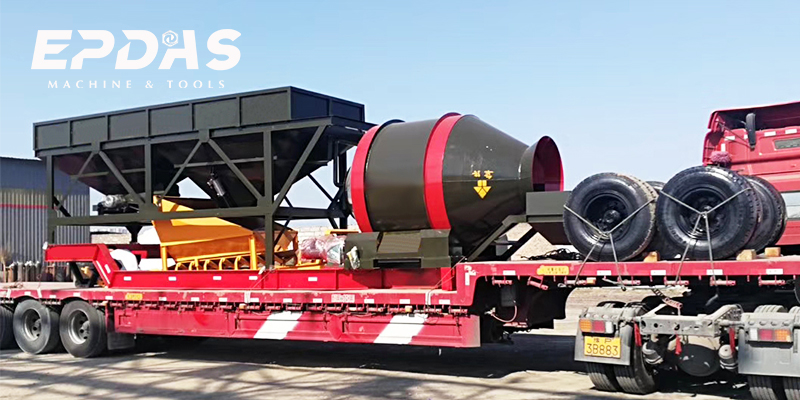
The YHZM mobile concrete batching plant is an important equipment trend for future construction in Kazakhstan. Despite its simple structure, it demonstrates outstanding adaptability in Kazakhstan’s complex construction environment and vast geographical span — saving contractors transportation and construction costs while significantly enhancing project flexibility and autonomy.
Please contact EPDAS for YHZM model specifications, export quotes, and customized solutions tailored to Kazakhstan!
